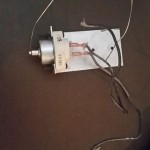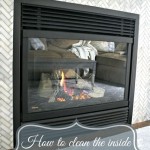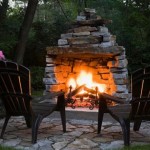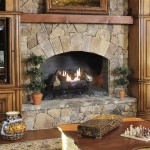Antique Gas Fireplace Inserts: A Timeless Blend of Aesthetics and Modern Convenience
The allure of a crackling fireplace has captivated homeowners for centuries. In modern times, the convenience and efficiency of gas fireplaces have risen in popularity. Antique gas fireplace inserts represent a unique intersection of these two desires, offering the visual appeal of a vintage fireplace with the performance and ease of use of a contemporary gas appliance. These inserts allow homeowners to transform an existing, often unused, masonry fireplace into a functional and visually striking focal point within a room.
An antique gas fireplace insert is essentially a self-contained unit designed to fit inside the opening of a traditional fireplace. It typically consists of a gas burner assembly, decorative logs or other media, and a metal firebox. The exterior is often crafted with design elements that evoke historical periods, such as Victorian, Edwardian, or Art Deco styles. This careful attention to detail is what sets antique gas fireplace inserts apart from standard modern models, allowing them to seamlessly blend with period architecture and antique furnishings.
The term "antique" requires careful consideration when applied to gas fireplace inserts. While a genuinely antique gas fireplace fixture, pre-dating widespread gas appliance use, might exist, inserts are generally more recent products designed with an antique aesthetic. These "antique-style" inserts replicate the look of older fireplaces but utilize modern technology and safety features.
Key Point 1: Authenticity, Reproduction, and Antique-Style Inserts
Understanding the terminology is crucial when considering acquiring an antique gas fireplace insert. A truly antique gas fireplace might be a historical artifact, possibly requiring extensive restoration and not necessarily designed for modern gas lines or safety standards. Due to the age and materials used in those times, they might also not meet modern safety requirements and emission standards.
Reproduction inserts are designed to mimic the appearance of antique fireplaces but are built with modern materials and technology. These are generally easier to install and maintain than actual antique fixtures. They offer a balance between historical accuracy and contemporary functionality.
“Antique-style” inserts represent the broadest category. These inserts incorporate design elements reminiscent of past eras but may not be direct copies of specific antique models. They often blend vintage aesthetics with modern features like remote controls, thermostatic settings, and energy-efficient burner systems.
Determining which type best suits your needs depends on your priorities. If historical accuracy is paramount, a carefully restored antique gas fireplace might be the ideal choice, provided you are prepared for the associated challenges. For ease of use and modern performance, a reproduction or antique-style insert is generally a more practical option. The value of each type also differs significantly, with genuine antiques potentially commanding a higher price due to their rarity and historical significance.
Key Point 2: Advantages of Antique Gas Fireplace Inserts
Antique gas fireplace inserts offer several compelling advantages over traditional wood-burning fireplaces and standard gas fireplace models. These advantages relate to convenience, efficiency, environmental impact, and aesthetic appeal.
Convenience is significantly enhanced with a gas insert. There is no need to gather, chop, and store firewood. Starting a fire is as simple as turning a switch or pressing a button on a remote control. Similarly, extinguishing the fire is instantaneous, eliminating the need to wait for embers to burn out. This ease of use makes a gas insert an ideal choice for those seeking a hassle-free fireplace experience.
Gas fireplace inserts are generally more energy-efficient than traditional wood-burning fireplaces. They can be precisely controlled to deliver a consistent level of heat, and many models offer thermostatic settings that automatically adjust the flame to maintain a desired room temperature. This precise control minimizes wasted energy and reduces heating costs. Some high-efficiency models are designed to capture and recirculate heat, further improving their energy performance.
Compared to wood-burning fireplaces, gas inserts produce significantly fewer emissions. They do not release smoke, particulate matter, or creosote into the atmosphere, contributing to cleaner air quality both indoors and outdoors. This reduced environmental impact is a significant advantage for environmentally conscious homeowners. Furthermore, properly installed and maintained gas fireplace inserts pose a lower risk of chimney fires compared to wood-burning fireplaces, reducing the potential for property damage and personal injury.
The aesthetic appeal of antique gas fireplace inserts is a primary draw for many homeowners. Their vintage-inspired designs can add a touch of elegance and sophistication to any room. The intricate details, such as ornate metalwork, decorative tiles, and realistic log sets, contribute to a warm and inviting ambiance. An antique-style insert can serve as a stunning focal point, enhancing the overall aesthetic of the living space and complementing existing décor.
Key Point 3: Installation, Maintenance, and Safety Considerations
Proper installation is paramount for the safe and efficient operation of an antique gas fireplace insert. Installation should always be performed by a qualified professional who is licensed and experienced in gas appliance installation. The professional will ensure that the insert is properly connected to the gas line, vented according to code, and that all safety features are functioning correctly.
Venting requirements vary depending on the type of insert and local building codes. Some inserts require a direct vent system that exhausts directly to the outside, while others can be vented through an existing chimney with a properly sized liner. Improper venting can lead to carbon monoxide poisoning, a serious and potentially fatal health hazard. Regular inspection of the venting system is crucial to ensure that it remains clear and unobstructed.
Regular maintenance is essential to keep an antique gas fireplace insert operating safely and efficiently. This includes cleaning the burner assembly, inspecting the gas line for leaks, and checking the pilot light. The log set or other decorative media should be cleaned periodically to remove dust and soot buildup. A qualified technician should perform a comprehensive inspection of the insert at least once a year to identify and address any potential problems.
Safety should always be the top priority when operating a gas fireplace insert. Never leave a burning fireplace unattended, especially if children or pets are present. Install carbon monoxide detectors in the home and test them regularly to ensure they are functioning properly. Be aware of the signs of carbon monoxide poisoning, such as headache, dizziness, nausea, and fatigue. If you suspect a gas leak, immediately turn off the gas supply and evacuate the premises.
Choosing the right antique gas fireplace insert involves careful consideration of several factors, including the size and style of your fireplace opening, your heating needs, your budget, and your personal preferences. Research different models and manufacturers, read reviews, and consult with a qualified professional to determine the best option for your home. Investing in a high-quality insert and ensuring proper installation and maintenance will provide years of warmth, comfort, and aesthetic enjoyment.
The long-term costs associated with owning and operating an antique gas fireplace insert should also be factored into the decision-making process. While the initial purchase price may be higher compared to standard gas fireplace models, the convenience, efficiency, and aesthetic appeal of an antique-style insert can make it a worthwhile investment. Regular maintenance costs, including professional inspections and cleaning, should also be considered.
Ultimately, the decision to purchase an antique gas fireplace insert is a personal one that should be based on a careful evaluation of your individual needs and circumstances. By understanding the different types of inserts available, the advantages they offer, and the safety considerations involved, you can make an informed decision and enjoy the timeless beauty and modern convenience of an antique-inspired gas fireplace.

Belmont Small Gas Insert

Windsor Small Victorian Style Gas Insert

Refinished Highly Ornate American Victorian Era C 1890 S Antique Interior Residential Cast Iron Perfection Line Copper Plated Fireplace Gas Insert

Gas Fireplace Insert Recycling The Past Architectural Salvage
Antique Gas Fireplace

Antique Gas Fireplace Insert Nex Tech Classifieds

For Details Cast Iron Fireplace Insert Gas

Enviro S Gas Q1 Insert

Gas Inserts For The Old Fireplaces San Francisco Victorian Restoration

Gas Inserts Victorian Fireplace
Related Posts








